I started making a lot of changes in the garden in the last few weeks. I ripped out most of the Salvia uliginosa because it's insufficiently floriferous. Why, I wonder, was it insufficiently floriferous? Did it need more water? Less overly amended soil? More heat? Agonizing.
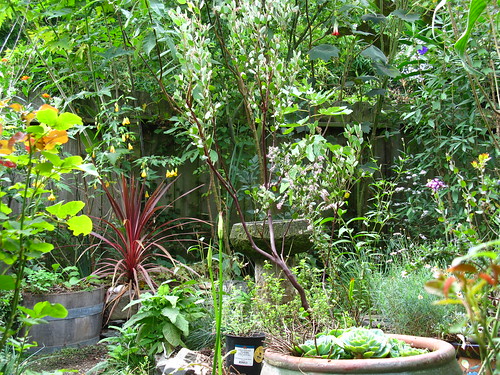
Anyway, most of it's gone. I left one or two little stems (so it will be back, undoubtedly). If I ignore them, maybe they will flower more next year? I don't know. Anyway, I put something small-ish where the S. uliginosa was: Ageratum corymbosum. I've had it in the garden for a long time, but it hasn't grown very well--probably because of too much shade. But Annie's insists it's a grower, so I'm giving it a shot it in a new location, and hoping for the best.
We bought a big, blue ball in Half Moon Bay. I think it was $30. I want a whole slew of them, in different colors.
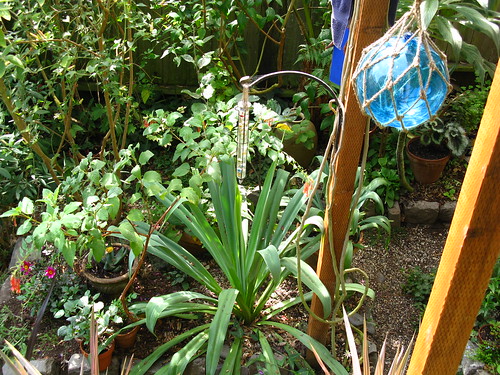
My grapes are still quite green. Every year is different with them, insofar as when the fall color emerges and to what degree. The vine grew enormously this year. I haven't even done a full accounting. It's way up the tallest bamboo, in fact. After the leaves drop, I'll try spur pruning for grape production next year. Would love to have some grapes. That would be sexy as hell.
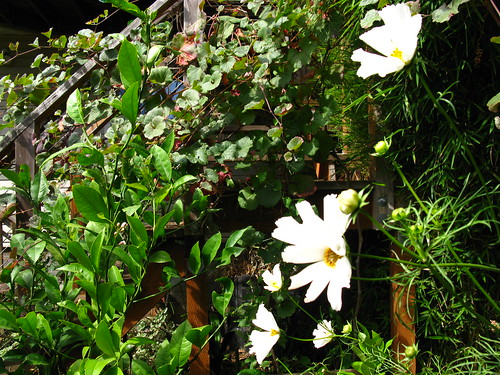
The black-leaved Bishop dahlias I started from seed last year grew up in clay pots on the porch this summer, making big, strong tubers. The foliage got very, very moldy. Is that a thing with dahlias in pots? I couldn't water the pots frequently enough to keep the soil moist. You know powdery mildew comes from not enough water, right? It's true. Disregard all those anecdotes about watering in humid weather. Getting water on the foliage can create different problems.
Anyway, in the picture below, fast forward a year and imagine a biiig clump of those violet-yellow dahlias and how freakin' fabulous that will be.
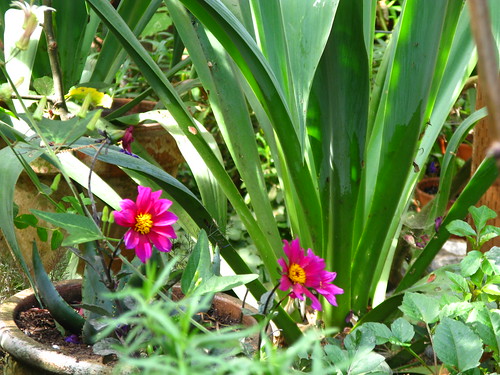
I'm going full-force on my Bernal Heights version of an American mid-western prairie garden in 2011, but using the palette of California native grasses already in place (the Queen of California grasses, Festuca californica, and also some Nassella cernua and Calamagrostis nutkatensis for size contrast). And there will be a selection of California wildflowers. There must always be some California wildflowers in my garden.
The mid-western element is coming from the tall perennial prairie sunflowers (Helianthus giganteus), Aster lateriflorus, Liatris liguilistylis, Eupatorium purpureum, Rudbecka triloba and
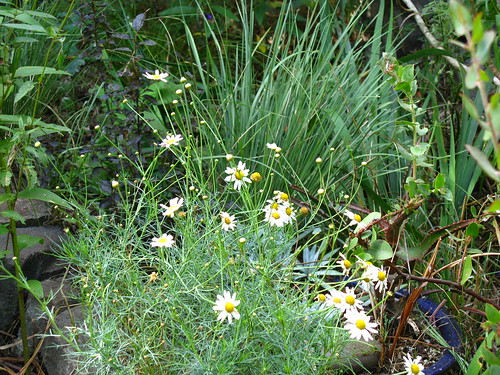
Speaking of Angelica, my A. purpurea has gone to seed. Rather quickly, I think.
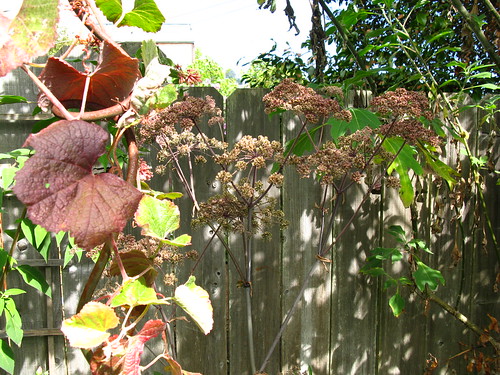
But the seeds are so pretty. I'll let them ripen for awhile longer and then try sowing some in pots.
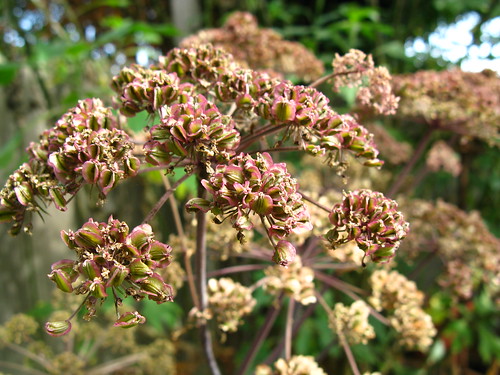
We have one Rudbeckia triloba already going. It desperately needs a companion. Hang in there, honey. They're coming.
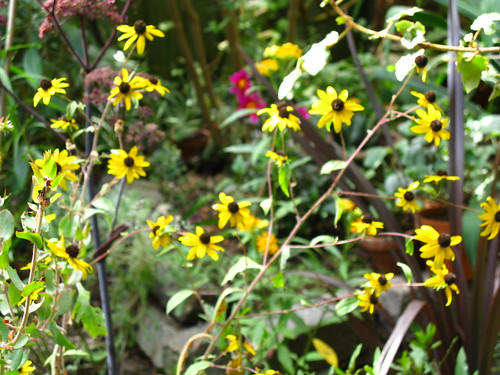
The Aster lateriflorus is fabulous. Definitely, definitely want to propagate this one too. Extensively. As extensively as I can.
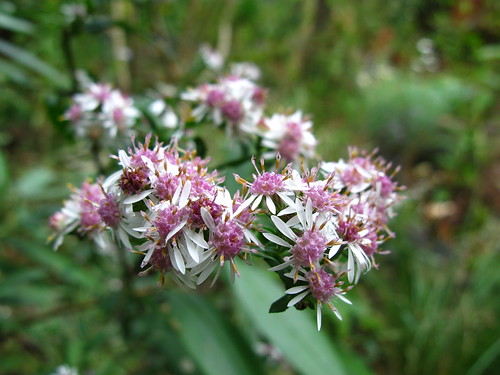
White-fruiting Fragaria vesca, flowering from seed sown just a few months ago. This was a recommendation from a Flickr contact who told me birds leave yellow strawberries alone. Also the flavor is like pineapple. I found the seed on Amazon of all places. They were expensive and germination was not great. But I got three plants out of it, so that's something. I'm planting them in the half barrel with a Southern highbush blueberry.
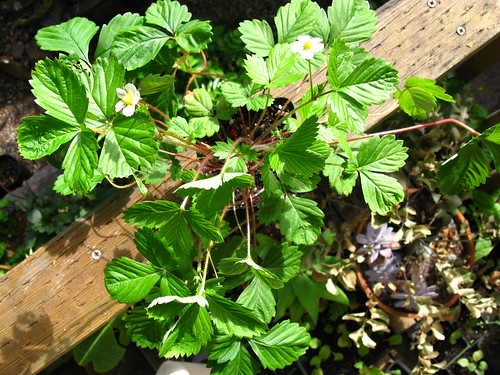
I see Cerinthe major 'Purpurascens' sprouting all over, as it has reliably for years now. I'll add one or two new plants from a nursery to keep the genetic diversity up. That's my little theory, to keep self-sowing annuals from becoming inbred.
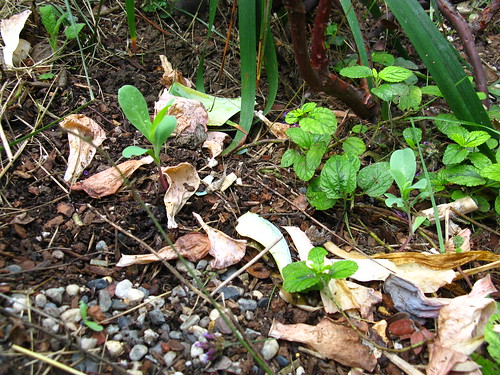
This summer, I watered Clematis 'Comtesse de Bouchard' after the first round of flowers and she put out new growth, and made new flowers.
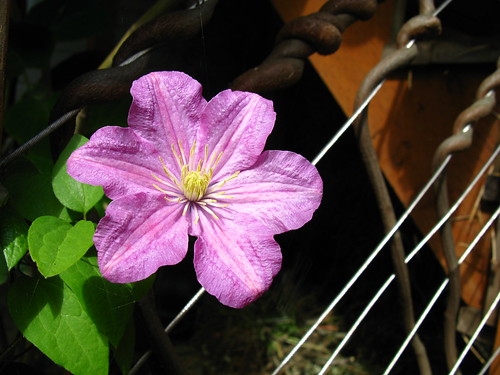
Here are my two Cordyline, rescued from the 50% section of my local nursery. They're like a gate at the bottom of the steps and I think that's kind of neat. I have the heirloom sweetpea Lathyrus odoratus 'Cupani' growing in both. Because I'm wacky that way.

The nursery area, already busy, will get much busier soon. Right now tho', it's crawling with huge spiders and I'm avoiding it entirely. I respect the spiders. They have a job to do. It's not a pretty job, that's for sure. I'm not loving all the mummified, dessicated bugs hanging in mid air, here and there around the garden. It's like, don't play with your food, alright? Yuck. Savages.
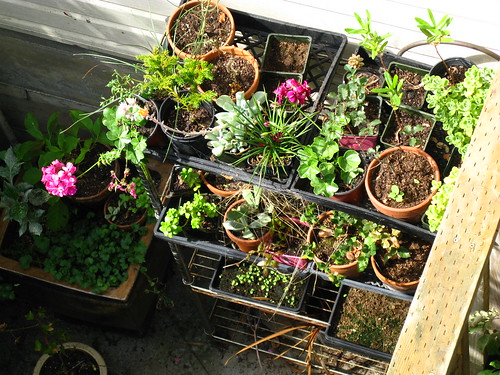
I picked a loquat off my neighbors tree (it was hanging over the sidewalk, so I don't have to ask). The pit made a plant. I love loquats. We had one in my backyard when I was a kid and I ate them all summer long. I don't know what this one's destiny is. For now, I have a loquat seedling to think about.
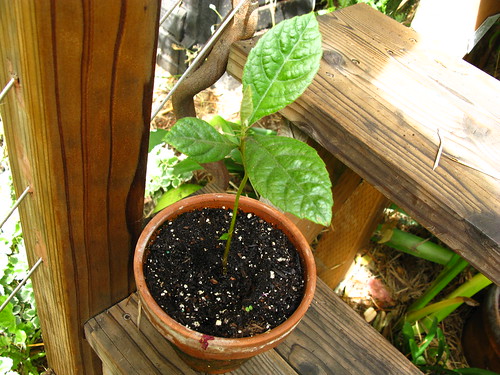
This will be a banner year for lemons. This tree is putting out! I've been pretty good about fertilizing once a month on hot days. That's apparently the secret. Well, I see lots of lemon babies.
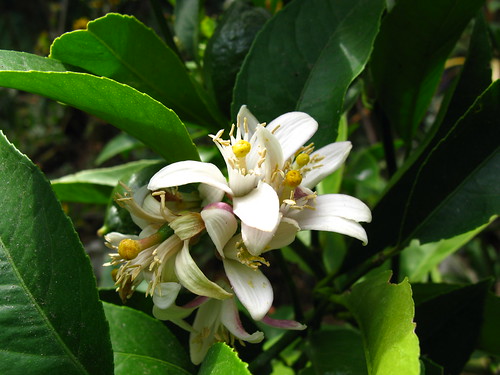
Tithonia diversifolia is blooming now like it blooms normally in winter. I think that's a sign of maturity--a plant doing what it wants to do, when it wants to do it. That it "knows" anything. It's a dumb plant. Don't go all hippy new-age in my blog comments. I don't go for that stuff. We do hard science here. Anyway, the bees are grateful. Yesterday I saw monarchs feasting here. That was nice and I hope they noticed we also have a variety of Asclepiads especially for them, and coming next year, Liatris ligulistylis. Prairie-type seeds I didn't get from Christopher are coming from Prairie Moon Nursery. from one of those mid-western states that starts with an M, Minnesota or Missouri or Michigan. There may be others; I don't remember. The catalog is bedside reading material for sure. Get one. It's luscious.

All this prairie action is supposed to happen in and around my quite established California native plantings, like the buckeye, now shorn of its leaves. Honestly, if I hadn't cut them off, I don't think it would have dropped them this year with our heavy El Nino rains. But now we're moving into a La Nina pattern and this winter should be substantially drier. Sad, really. But necessary. California living.
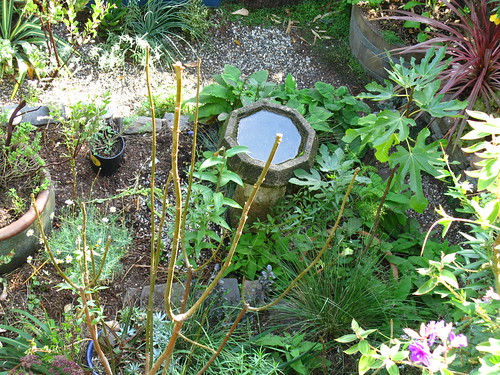
The Arctostaphylos pajaroensis 'Lester Rowntree' will be an uncertain companion to a mid-western prairie. But we live to see these possibilities unfold and play out.
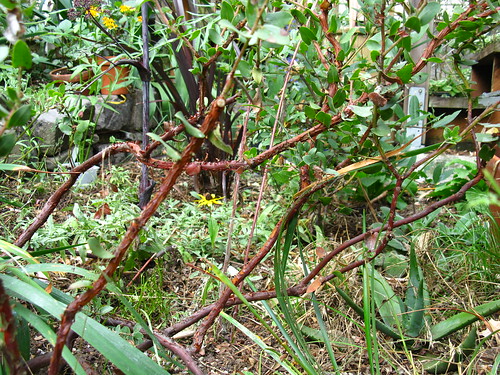
Speaking of Arctostaphylos pajaroensis, I scored a 'Paradise' today in a 1-g pot at my local nursery in the 50% off section for for $6.99. Alas, my long-term containerized cork oak died in the recent high heat. I was growing it for a bonsai/dwarfing project. Very sad to lose it. I should have watered the pot, or moved it indoors for those super-hot days. I thought it would be fine. Wrong! Rest in peace, fair cork oak. I will try again later. In the meantime, 'Paradise' will take your place.

6 comments:
Hey, I love your blog and garden! BTW, Farmer's Almanac predicts the Pacific Southwest will have a wetter than normal winter this year :) They're usually right...;) They said we were going to have a cooler than usual summer last year, and that was certainly correct, so let's hope they're right about this rainy season. :D
Bad news Chuck. The Angelica gigas is of Asian extraction, Japan, Korea, China. The good news is there is an amazing correlation between the flora of the Appalachians and those parts of Asia, so much so that scientists of all kinds are intrigued. We match plant wise almost to species level on a high number of things. Now there is also a possibility I have ID'd it wrong and it could be angelica of another species. I try my best.
It is still way green here too for the first of October. There is barely any fall color at all right now. I think it is late this year.
Okay, we'll grow the Anglica gigas but I shall not pretend it is part of my American midwestern pastorale.
All good questions you ask regarding the bog sage, one that I grow off and on. It occasionally has a good year, just to keep me interested. If you ever figure out what the bog sage wants, please post. That angelica never bloomed for me at all this summer, which is what I expected, but it has some pretty fine leaves. Lots of planting and some ripping out going on here too.
Loquats are sexy.
Hehe. I can hear it now, "Come out to the garden and I'll show you my blue balls."
Post a Comment